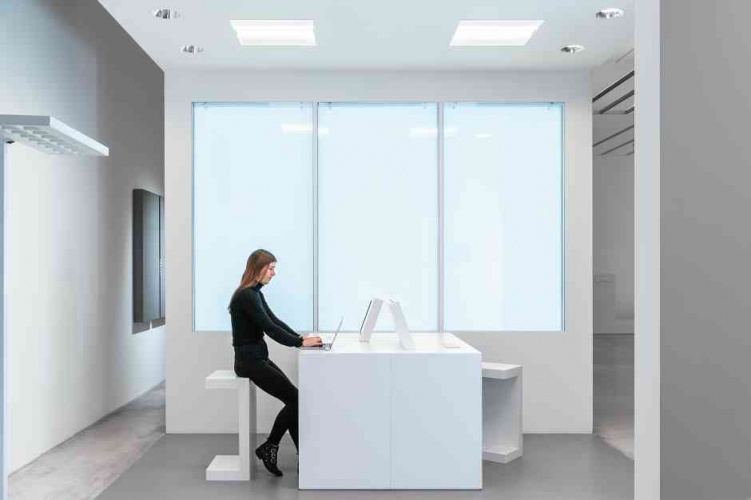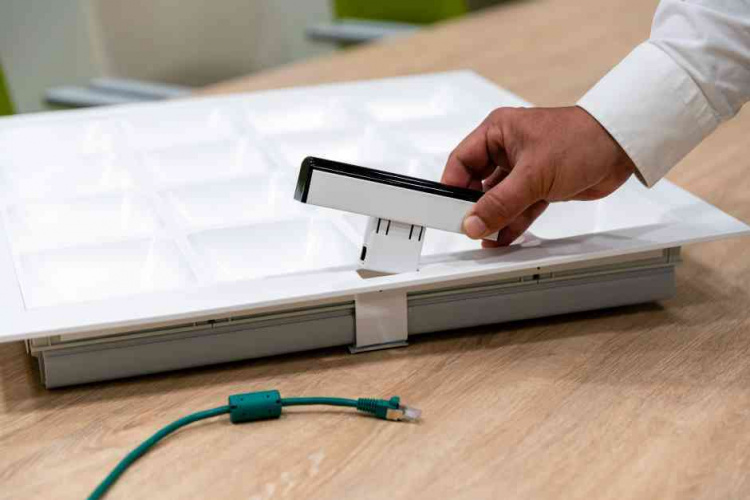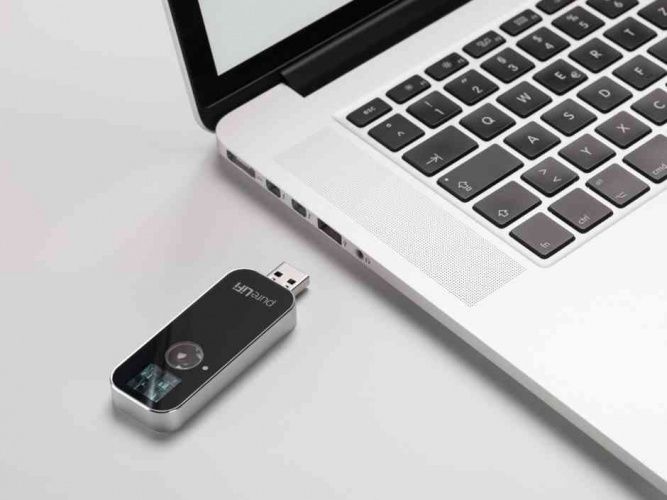
In today’s connected world, wireless data has become a critical utility: an invisible element of our modern infrastructure that increasingly underpins many of the services upon which we rely.
And as we deploy connected devices in ever-greater numbers, and embrace emerging technologies such as autonomous systems, the internet of things and virtual reality (VR), the demand for wireless connectivity is expected to increase exponentially.
But there’s a problem. The radio spectrum upon which much of our connectivity depends is getting crowded and some fear that our insatiable appetite for data will ultimately lead to a ‘spectrum crunch’ that will soon crash our communications networks, rendering many of our fancy new technologies useless.
Against this backdrop, unlocking new levels of data and bandwidth is a priority, and one area of technology that looks set to play a major role in addressing this challenge is Li-Fi, an emerging wireless optical networking technology that enables data to be transmitted over short distances via the rapid and imperceptible (to the human eye) modulation of LED light bulbs.
Pioneered almost a decade ago by Edinburgh University’s Prof Harald Haas, the technology has some compelling advantages. For a start, the data spectrum for visible light is 1,000 times greater than the RF spectrum so there’s more capacity to drive bigger bandwidths and higher data rates. Li-Fi developers have already demonstrated speeds of 224Gbps in laboratory conditions and expect 1Gbps or above – around 100 times faster than conventional Wi-Fi – to become the norm.
What’s more, because data can be contained within a tight area of illumination, there’s little risk of interference and it’s also highly secure: while radio waves penetrate through walls and can be intercepted, a beam of light is confined.
Haas first caught the headlines with the technology following a 2011 TED talk (see below) in which he demonstrated how a standard LED lamp could be used to transmit high-resolution video directly to a receiver placed just beneath the bulb.
In the years following this jaw-dropping illustration of the technology in action, Li-Fi has begun making waves beyond the academic research space, with a number of organisations already commercialising the technology, and a growing number of companies supporting research into what is increasingly being viewed as a key emerging sector. Indeed, according to a recent report from Global Market Insights, the Li-Fi industry is expected to be worth $75.5bn by 2023.
Unsurprisingly, one of the main players is the firm spun-out of Haas’s research, Pure LiFi, which, since its launch in 2012 has developed a number of Li-Fi-based hardware peripherals that can be used to upload and download data.
As the market has evolved, Pure LiFi has shifted its focus to refining the Li-Fi specific components that could be integrated into next-generation smartphones and other connected devices. It used this year’s Mobile World Congress in Barcelona (March 2019) to demonstrate its burgeoning capabilities in this area using a modified laptop with a 1Gbps Li-Fi system. “We’re focusing on developing the Li-Fi components that will enable anything to talk to everything else,” Pure LiFi CEO Alistair Banham told The Engineer. “Our goal has always been to develop the components to enable these big companies to design their own Li-Fi systems around our light antenna device.”
Banham said that there are now around 189 deployments of the firm’s technology worldwide and that it’s working with a range of customers, including smartphone firms and major lighting companies – such as Lucibel, Zumtobel and Signify (formerly Philips Lighting) – who view Li-Fi as an exciting new market opportunity.

Banham identified a range of potential applications for the technology: from its use in smart office spaces, to domestic and consumer applications either for high-bandwidth machine-to-machine communications or, ultimately, to provide domestic ‘hotspots’ in high-bandwidth areas such as living rooms and bedrooms.
He added that the technology also has great potential for location-based services. Indeed, in a separate development, Signify has been working with French supermarket chain Carrefour on a Li-Fi-based indoor-positioning systems, whereby each LED has a distinct location code and is able to interact with a smartphone app to help users locate products and promotions.
Clearly, despite all of its many advantages, light-based communication relies on line of sight to work, and for this reason it’s viewed as a complementary technology to existing wireless solutions rather than a replacement.
“Where we can really bring a benefit is in the crowded radio spectrum where we see the launch of a new wireless LAN standard pretty much every year but fail to deliver those data rates in practice because there’s just so much RF noise and interference out there,” explained Pure LiFi co-founder and CTO Mostafa Afgani. “By offering to shift that communication to a different band – the light band – we can now provide another wireless channel that can deliver those data rates over a medium that is much more reliable and can actually deliver the quoted data rates.”

While refining its own technology, Pure LiFi is also playing an active role in developing what it terms the Li-Fi ecosystem and it recently joined forces with organisations including Nokia, Emirates Integrated Telecommunications Company, Liberty Global and Lucibel to set up the Light Communications Alliance, which aims to ensure collaboration to help stimulate the market for the technology.
A key member of the wider Li-Fi community is Oxford University photonics specialist Prof Dominic O’Brien, who has discerned a growing commercial interest in the academic research base in recent years. “There’s a lot more interest and the interest is at a higher level of commitment, with companies such as Signify committing a considerable amount of resources to bringing this stuff to market,” he told The Engineer.
One example of this growing appetite for collaboration is the recently announced ELiot (Enhance Lighting for the Internet of Things) project, a €6 million EU-funded effort involving, among others, the University of Oxford, Signify, Nokia and Deutsche Telekom, which is looking at developing mass-market applications for Li-Fi technology.
Speaking at the launch of the project in July 2019, Prof Jean-Paul Linnartz, who’s leading Signify’s research into Li-Fi, said: “Li-Fi can deliver high-speed communication, interference-free with high reliability. The available spectrum can be fully reused in every room. The lighting infrastructure is in an excellent position to provide wireless connectivity for the rapidly increasing number of wireless devices in every room.” Signify is at the forefront of efforts to commercialise Li-Fi technology. In June 2019 it announced the launch of its Truelifi product range, which it claims can be used to give 150Mbps connectivity to its lighting units.
Another initiative singled out by O’Brien is the EU-funded WORTECS (Wireless Optical/Radio TErabit Communications) project, which is exploring how a combination of high-frequency mm-wave radio communications and Li-Fi technology could be used to meet the incredibly high data rate demands of virtual-reality technology.
O’Brien said that the project – which involves, among others Pure LiFi and Orange – is working on a concept in which separate branches of optical fibre would be taken into each room of a house and used to direct a narrow beam of light at a terminal. “We can get very high data rates from that, because we’re essentially using the data directly from the fibre, which is transmitting at 100Gbps,” he said.

With the technology progressing rapidly, and the weight of real-world commercial applications and trials providing compelling evidence of its advantages, it seems inevitable that Li-Fi will one day be as widespread as the other wireless technologies we now take for granted. But despite the wow factor of Prof Haas’s 2011 TED talk, it’s entirely possible that when it does arrive, we won’t notice it. It may simply become another technology that creeps into the mix by stealth, humming away quietly in the background, its success predicated on its complete invisibility to those it serves.
“It might be one of those things that actually the average user doesn’t really know about because it’s just another wireless technology integrated with the RF technologies that are available already,” said O’Brien.
“Together they provide some augmented service. But are users going to know it’s light and not radio?”




Swiss geoengineering start-up targets methane removal
Several rather dubious statistics in this report. IF methane had 120× the thermal effect of CO2 that would be TWO orders of magnitude. Two is not...